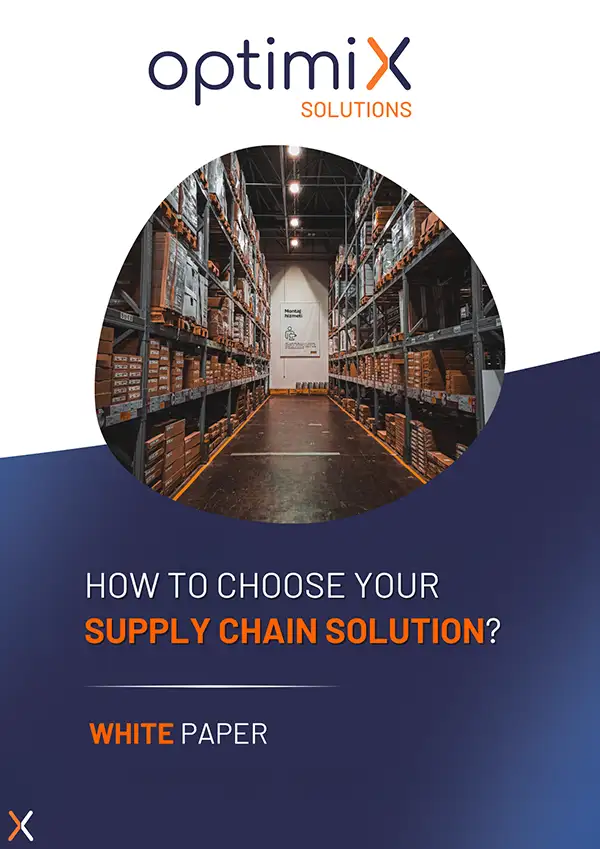As part of its supply chain management, a good inventory optimization is essential to ensure optimum performance. Inventory represents a significant proportion of a company’s assets, and must be managed efficiently to avoid unnecessary costs and stock-outs. Good in-store inventory management is essential to avoid stock-outs and over-stocking.
This article provides an overview of the different types of inventory, the benefits of stock optimization.
The different types of stock and their functions
Safety stock
Safety stock, also known as buffer stock, is used to deal with unforeseen events in the supply chain, such as late deliveries or unexpected supplies.
Calculated according to quantities defined by inputs and outputs It is used to protect against the risk of stock-outs on a daily basis. This inventory is often based on historical data, such as the changes in inventories and consumption consumption.
Alert stock
The alert stock serves as reorder pointsignaling that it’s time to replenish before reaching the minimum stock. It enables control inventory by anticipating stock movements movements.
This warning threshold is crucial in ERP systems systems to guarantee product availability without accumulating excessive inventories.
Seasonal stock
Some goods are subject to seasonality such as fashion items or toys during the holidays. Visit seasonal stock enables us to anticipate peaks in demand depending on the time of year.
It can include perishable productsproducts requiring stock rotation to avoid losses due to depreciation or write-downs. write-downs.
Stock in transit
Stock in transit represents stocked products which are currently being delivery or production. Although it is not yet stored in the company’s warehouses, it must be taken into account when managing existing existing inventories. This also includes intermediate stocks at production of goods or transformation in the production process.
Speculative stock
The speculative inventory is created when the company anticipates a price increase or higher future demand.
This strategy allows you to make a profit if purchase prices but it also entails risks in terms of storage costs. storage costs and inventory inventory depreciation.
Careful management is needed to avoid tying up too much capital. capital.
Dormant stock
Dormant or dead stock consists of products that are no longer sold or used, often due to obsolescence or changing market standards.
Stocks of dormant products take up space and represent a significant financial cost for the company. Regular inventory control is essential to prevent these products from incurring unnecessary management costs.
Salvage stock
The salvage stock is made up of returned, damaged or obsolete products, but which can be recycled or used for new products.
This approach reduces waste while optimizing the use of resources. resources resources.
Stock types by condition
Physical stock
Visit physical stock refers to products actually in the warehouse and available for sale.
Precise management and constant monitoring of these inventories avoid errors in calculating stock quantities. stock quantities.
Net stock
The net stock is the physical stock after deduction of products reserved or awaiting delivery. This data is essential for assessing availability of products in real time.
Available stock
The available stock includes both net stock and goods in transit. It represents the products that the company can deliver immediately or within a very short time.
What are the 3 stock levels?
Minimum stock
The minimum stock is the threshold below which stock must not fall. It is used to guarantee that the company has sufficient volume to meet demand until the next order. replenishment.
Maximum stock
The maximum stock represents the quantity of stock that a company must not exceed. This threshold prevents overstockingwhich can lead to high storage costs and depreciation risks. depreciation.
Stock alert
Lorem ipsum dolor sit amet, consectetur adipiscing elit. Ut elit tellus, luctus nec ullamcorper mattis, pulvinar dapibus leo.
Optimum stock
The optimal stock represents the ideal quantity to be maintained to meet demand without excess. It maximizes profitability by reducing storage costs while avoiding stock shortages.
Why is inventory management essential?
Inventory management is essential to optimize a company’s profitability. It enables you to control acquisition costsThis enables us to ensure a constant supply of products, and to respond effectively to customer requests. Good inventory management prevents costly stock-outs and overstockingwhich ties up funds and reduces profitability. By controlling average stockthe weighted average unit cost and using tools such as inventory management softwarethe company can optimize its production and distribution processes, while ensuring maximum maximum profitability. We recommend, however, that you follow our for stock optimization.
Inventory management is a key element of any company’s strategy. By understanding the different types of inventory and applying appropriate methods, you can improve the efficiency of your supply chain and maximize profitability. Good inventory management requires the implementation of valuation methods accurate monitoring of entries and and withdrawalsas well as the management of in-transit and speculative speculative stocks. By integrating modern tools such as ERP and RFID trackingtracking systems, you can optimize your inventory management and guarantee greater responsiveness to market fluctuations.







